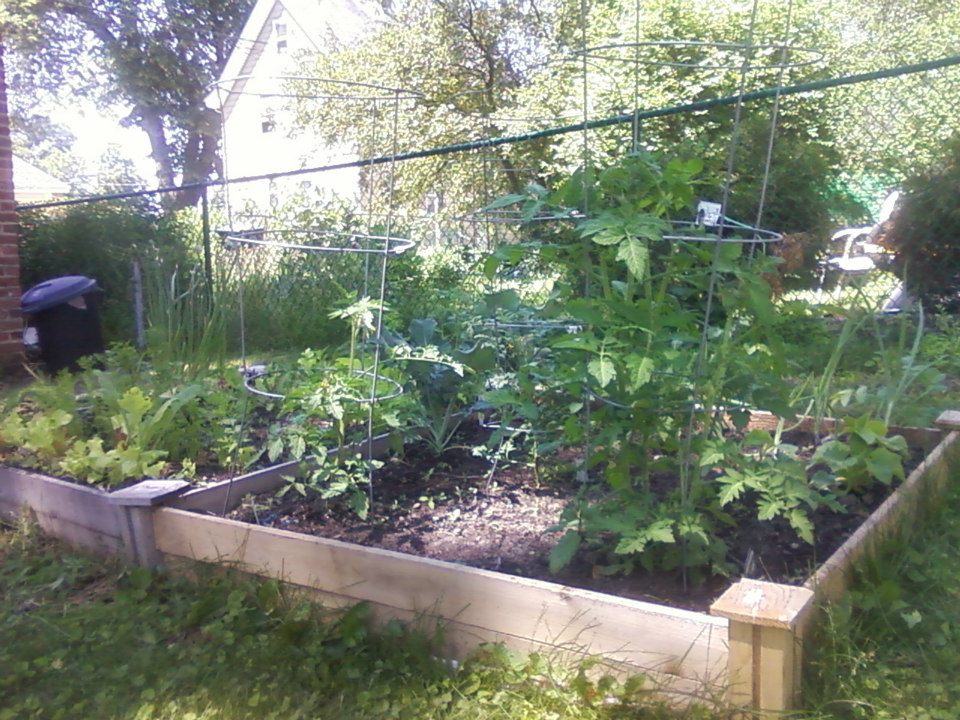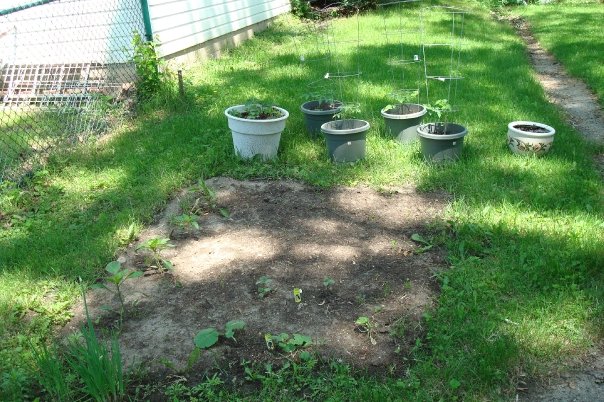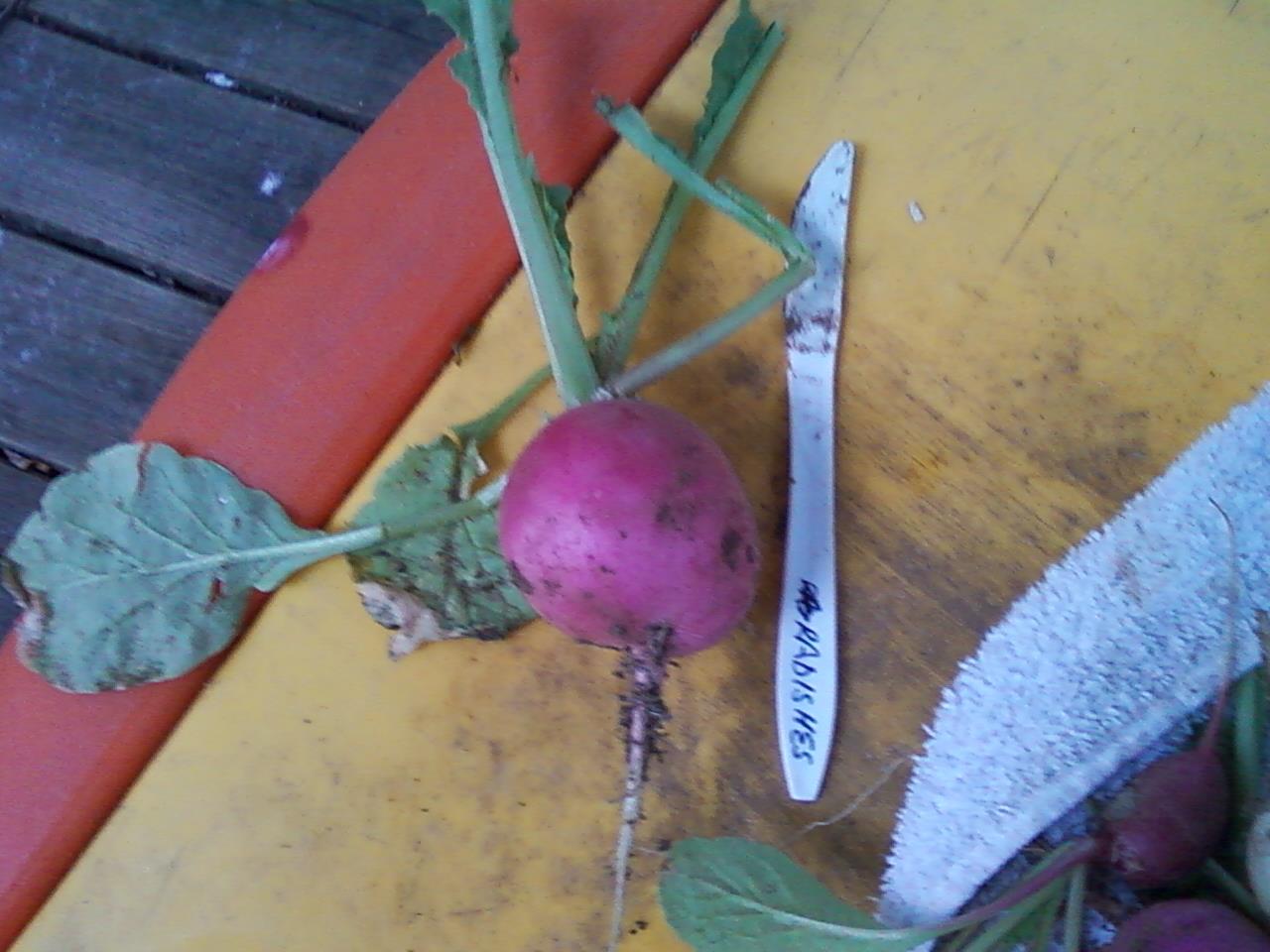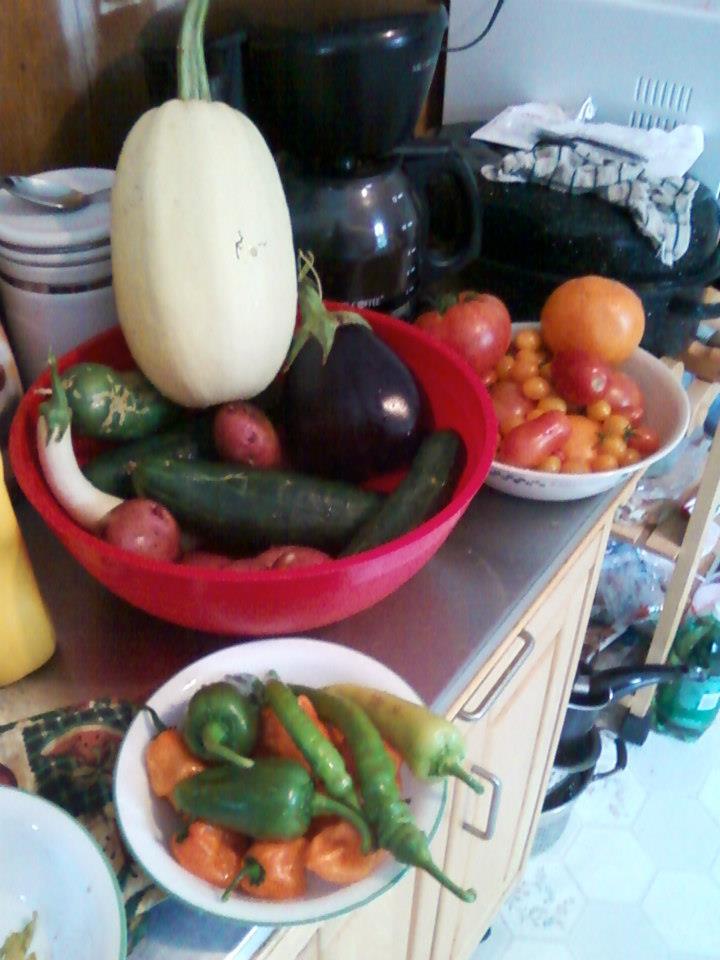 You may have read several posts on this blog relating to the non-spring-like weather we have been experiencing here in the Midwest. Well, it’s still cold, but the weather has to break sooner or later and that concept has me so excited to get my garden going! Have you ever considered gardening? Are you new to gardening? You may have considered it and gotten overwhelmed by the details- What class should I take? What books should I read? What do I do?
You may have read several posts on this blog relating to the non-spring-like weather we have been experiencing here in the Midwest. Well, it’s still cold, but the weather has to break sooner or later and that concept has me so excited to get my garden going! Have you ever considered gardening? Are you new to gardening? You may have considered it and gotten overwhelmed by the details- What class should I take? What books should I read? What do I do?
I am here to tell you to Just Do It! There is nothing like watching your own food grow and then eating it. Things have been growing in the dirt since the beginning of time with no help from humans, so if you approach your garden project with this in mind and just aim to take it lightly, gardening can be really fun! I got started about four years ago only because someone at work left a flat full of different seedlings and a sign that said help yourself. I waited until the end of the day and only a few disappeared, so I carried the whole flat home on the bus and got started with just a 4´ × 4´ plot. Here are some beginner tips; just things I’ve learned over the last few years, that may help you get started. All these tips will be from a Madison, WI, perspective, but should be applicable anywhere in the midwest.
 When to plant?
When to plant?
Mid-May to June 1- make sure there is no threat of frost at night!
Where to plant? Your plot will need full, direct sunlight for at least five hours per day to be successful.
In pots: Consider this option if you live in an apartment, have no yard space, mostly shade, or “bad” soil
- Great for herbs and tomatoes!
- Remember: you will need to water frequently as pots do not hold moisture as well as the ground.
- Make sure the pot is well-drained to prevent root rot. You can poke holes in the bottom or add about an inch of pebbles.
Raised bed: Consider this option if your soil is troublesome
- Beware of the black walnut tree! Black walnut tree roots release a chemical called “juglone” (5 hydroxy-1, 4-napthoquinone) that kills tomatoes and related plants. I the one in my yard has killed my cucumbers and other plants that are low to the ground as well.
- Dig up a small shovel-full of your dirt. Less than optimal conditions include soil that is too thick and clay-like (may happen if you live near a lake) or soil that is very sandy and won’t hold moisture. If you have soil at either of these extreme ends, you many want to try the raised bed as opposed to going in ground.
- Build up wall at least 18” with any kind of wood (beware of treated wood, make sure chemicals won’t be leaching into your soil). Cover ground with non-degradable plastic. Fill space with dirt, compost and manure.
- Down side: will have to water raised beds more frequently than in ground and, when starting, will need to create a balance of nutrients (don’t worry too much!). Starting with some compost or manure will work just fine.
- If staying organic, beware of getting dirt or compost from county supplies. You don’t know what pesticides or fertilizers may have been used. You can get dirt delivered to your yard for a relatively cheap price. Each year top off with more dirt and compost/manure.
In ground: Consider this option if none of the above applies to you
- Difficult to start! I recommend removing sod first- grass roots can be problematic when starting from seeds. Use the sod you remove to cover other bare spots in your lawn (don’t forget to water frequently to get the roots to lay down)!
- Home Depot (also hardware stores) rents tillers- you will need a heavy duty one to get started or you can spend the day in the yard with a shovel (just rent the tiller). For subsequent years, you can get the smaller, cheaper tiller just to aerate your plot.
Organic or not??
 Think about whether it is important to you to maintain an organic plot. Do you want to use fertilizers (such as Miracle Grow) and pesticides? I have found that it is relatively easy to get by without these things. When considering pesticides, remember that you are putting chemicals on or near your future food! It’s okay if a few bugs take a few bites out of your greenery, but it is gets out of hand there are several options to deal with them. Those tips are out of the scope of this post, but a quick Google search will give you lot of option.
Think about whether it is important to you to maintain an organic plot. Do you want to use fertilizers (such as Miracle Grow) and pesticides? I have found that it is relatively easy to get by without these things. When considering pesticides, remember that you are putting chemicals on or near your future food! It’s okay if a few bugs take a few bites out of your greenery, but it is gets out of hand there are several options to deal with them. Those tips are out of the scope of this post, but a quick Google search will give you lot of option.
Dealing with Critters
Wherever you are, you will undoubtedly enter into war with furry creatures native to your backyard. Rabbits, squirrels, raccoons and even birds will be drawn to your new “food dish.” Here are a few options to keep them out.
- Surround your plot with chicken wire. This will help, but can be a bit annoying when attempting to weed and might not keep out all of the smaller animals or animals that like to burrow underground.
- Create an “Invisible fence.” You can buy spray bottles full of deer or rabbit urine as well as completely organic bottles of what I call “Smelly Stuff” containing things like animal urine, rotten eggs and garlic. You can also create a suspension using hot pepper, oil and water.
**I recommend spraying these things around perimeter of your garden and try not to hit greens. If you must cover the whole plot to get protection, make sure you wash your veggies before eating! - I have also had luck with blood or bone meal. These options can be spread on your plot’s soil and also provide good minerals.
- The big guns: If you get desperate, you can spend money on things like motion lights, motion water sprayers, noise makers to keep the critters out.
Seed vs. Seedlings
 In WI, growing season can be short. The ground is generally thawed around Memorial Day. Cold weather/first frost can begin in September, making the entire growing season about 120–150 days. Some vegetables grow just fine in this period starting by sowing seed in the ground, while others may work better starting from a seedling.
In WI, growing season can be short. The ground is generally thawed around Memorial Day. Cold weather/first frost can begin in September, making the entire growing season about 120–150 days. Some vegetables grow just fine in this period starting by sowing seed in the ground, while others may work better starting from a seedling.
Starting from seed:
- Check to see how long things grow, you need 2-6 weeks to get seedlings started on your own.
- You need space, light, right amount of moisture!
- Once seedlings are established, begin placing them outside for a few hours at a time before you plant them.
Starting from seedlings:
- Check to see how long your veggies of choice need to grow.
- Favorite Madison, WI garden stores: Klein’s and Johansson’s
- Home Depot is a great garden center, in my experience!
- Look for healthy plants, no bug bites, the more shoots the better!
- Plant seedlings as soon as possible after you get them home.
What to plant?
What do you like? Start out with a variety- just one or two plants. Keep in mind how much food each plant will bear. I recommend finding varieties that aren’t common in grocery stores or at farmer’s markets. Have fun with it! Try variety seed packs for carrots or peppers.
In my experience….
- Easy crops: zucchini, eggplant, cherry tomatoes, potatoes, onions, cucumbers, hot peppers, basil
- Hard crops: tomatoes, beans, peas, carrots, bell peppers, broccoli/cauliflower, cilantro
- Fun crops: Egyptian Walking Onions
Other Tips
- PLAN YOUR PLOT! Take a look at the amount of space you have. Research how much space plants/seeds need between them. This will help you maximize your space. Sketch out a map of where you will put everything and keep it handy! You will forget what is where. This map will also help you identify plants vs weeds.
- Yes, those little seeds/plants really DO need three feet between them! It’s hard to imagine that tiny seed or seedling could ever be that big, but zucchini and tomatoes, for example, get huge and like to spread out.
- Try to keep up with weeds– a little weeding a couple of times a week will save you headaches! Use your online resources to identify young plants- different varieties can look different. Take picture of the seedlings out to your plot to help prevent uprooting your future dinner.
- Onions: start from sets, not seeds- buy these from a good garden store, not the grocery store.
- Potatoes: buy seed potatoes, cut in small pieces with one eye on each piece, place on newspaper and leave overnight to dry. Plant the next day! You don’t necessarily need a hill, they will grow just buried depending on your soil.
- Carrots: till the soil so it is nice and loose at least 12” deep
- Tomatoes: looks at hybrid varieties that have been bread to either grow faster or resist certain common plant diseases like blight. Heirlooms are fun, but can be more susceptible to disease. Try them both and see what your get.
- Freeze stuff! If your garden does well, you may get more food than you can cook in a week! Either freeze extras or offer them to neighbors, family or coworkers.
- Don’t sweat it! If all else fails, there is always the farmer’s market
- Have fun, enjoy the miracle of life!
Karen Reece
Latest posts by Karen Reece (see all)
- She’s Going Soft! – A commentary on “hard” and “soft” sciences - July 30, 2014
- What are you so worried about? - June 9, 2014
- 5 Signs You’re Ready to Earn that Ph.D. - March 7, 2014

This post has been reblogged here: http://domesticgoddessorbust.wordpress.com/wp-content/uploads/2013/04/22/vegetable-gardening-for-beginners-by-karen/
Domestic Goddess is a group of Madison, WI ladies that meet monthly in an attempt to become masters of all things domestic (or at least just hang out with a bunch of really great women).